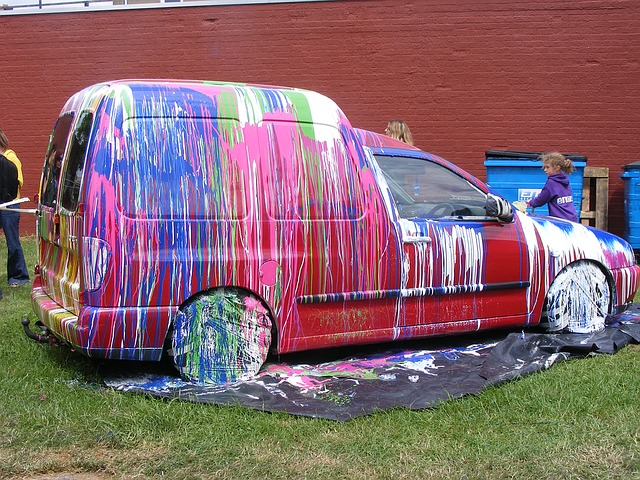
Photo by westcollective (Pixabay)
If you’re a car enthusiast, you may have considered repainting a vehicle at one point in your life. If only it was as easy as driving into a garage and pulling out of it with a perfect new hue, like in Grand Theft Auto. Alas, getting a new color for your car’s body isn’t quite that easy. For some, it can be the most costly part of their Mercedes-Benz restoration project. Here’s what you need to know.
In a restoration project, an inaccurate color may devalue the car.
If you plan to restore an old Mercedes-Benz with the intention of creating a collectable or reselling it for a profit, you’re not going to paint it any old color, as this will more than likely hurt its overall value. This is something that collectors hoping to buy an accurate car really look at: if the color of the vehicle matches the color of the car when it drove off the lot. Finding the “correct” color can be difficult, sometimes even involving calling the manufacturer. Even then, you can end up with something a few hues off and not glossy enough.
It can be expensive for a shop to do, ranging anywhere between $300 and $5,000.
It’s a fine endeavor if you have a local paint shop you or your mechanic trusts, but you should still be aware of the potential costs. For large, complicated projects, people have reported paying as much as $7,500 for a complete, floor-worthy job. Some projects cost as little as a few hundred dollars, but it depends on the amount of sanding needed, the size of the car, the type of paint, and many other factors. Get an accurate quote before you decide to go for it.
It’s not an easy DIY project and has many steps and hazards.
Certainly, you can try to do this yourself, if you have a properly ventilated area indoors, gallons of paint (including the primer, topcoat, and clear coat), face masks, a spray gun with an air compressor, safety glasses, an electric sander, a dust extractor, and lacquer just lying around, just to name a few things. You can’t just dive in, either. It takes several steps, including sanding and stripping down each panel of the body, priming with several coats, and painting with at least four coats. There is also the con of these materials creating a very hazardous environment if not stored or ventilated properly. They can cause fires, fainting, and messes when mistakes are made. Guides online aren’t as good as guides in person. If you have no experience at all, you may hurt yourself, your car, your property, or others around you.
New paint can make imperfections stand out more, not less.
You would think that a good paint job could cover up all of those little imperfections: scratches, dents, uneven surfaces, odd fenders, mismatched accessories or parts, or little bumps and lumps. In practice, a paint job can make things look a lot worse. The only way to fix it is with extensive surface preparation, which may even include welding and body work, adding to the price tag. If your car’s paint job just needs some small fixes, a touch-up approach may be best.
Of course, if your vehicle is in bad shape and really needs a new paint job, it’s still likely worth it. Depending on the vehicle, many auto owners struggle with this process. Hopefully these warnings will help you decide whether or not to paint your car.
